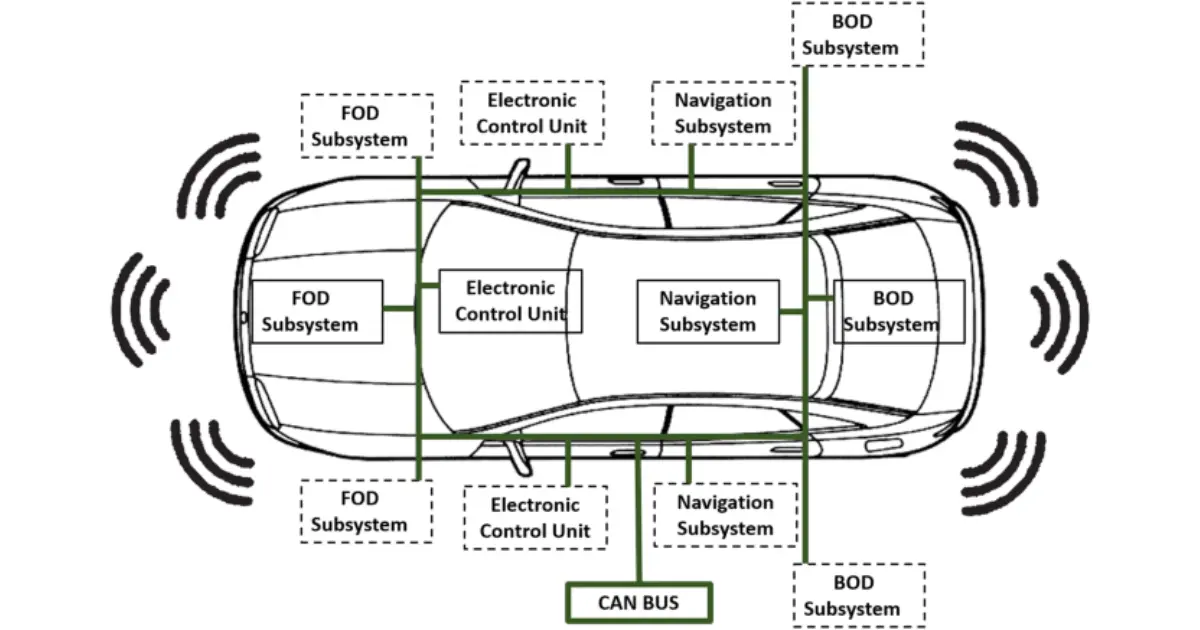A vehicle collision avoidance system is one type of safety system used in automobile vehicles. It is a safety feature that saves the car and passengers from collisions. A lot of sensors and technical features work together to prevent the collision. In this article, I will discuss the details of the working process of a vehicle collision avoidance system.
Vehicle Collision Avoidance System
A vehicle collision avoidance system(VCAS) is always an upgrading system that upgrades itself over time. First, as a safety measure, the Seatbelts are invented. After that, most of the car upgrades the system with sensors, cameras, and radar to prevent and analyze the exact reading of everything.
From the driver’s behavior to the lane changing, everything comes under the VCAS system. Depending on the vehicle model and the price, this system changes. Some sensor-based based car used to save lives but these sensors can also malfunction and lead to damage to the vehicle.
Sometimes, the vehicle sensor fails, and that is the major factor that you need to be manually fit. In recent times, Tesla, the autopilot vehicle has errors that can’t detect the trains or sometimes it can change lanes without knowing the street view. So, manually operating the vehicle is another big safety thing for your vehicle.
Working of Vehicle Collision Avoidance System
The VCAS system will be of different types and each type has its unique working principle. But all the systems are interconnected with the vehicle’s ECU or some other modules used especially for this system. So the working principle of different types of VCAS is-
1. Forward Collision Warning System(FCW)- This is a safety measurement tool where cameras are used to view the forward activities when the vehicle is in running condition. This camera is installed in front of the dashboard or the bumpers. It has a clear vision of the forward vehicle speed moving in front of the driving car. Also, this sensor can help to detect pedestrians, humans, and obstacles, and according to that sense, this sensor helps to engage the brake or start noise in the vehicle.
2. Automatic Emergency Braking(AEB)- AEB is the advanced system that comes with the ABS. This system helps to engage a sudden brake when the driver is unable to do that. if the vehicle detects something is moving closer or there are student thing happens then the radar and the camera will detect the distance and the vehicle speed. According to that data, the sensor can assist the braking to fully stop or slow down the vehicle.
3. Lane Departure Warning(LDW)- In the time of changing lanes, sometimes we miss seeing the rear view in the mirror. To solve this problem one camera is used to detect the coming vehicle speed and over that information, it indicates the lane change. Also, this sensor can detect detect the gap between the two vehicles running at the same speed. This helps to keep a safe distance sideways also.
4. Blind Spot Detection(BSD)- The blind spot is the corner where the driver can’t take a look. When you park a vehicle or change a lane a radar is used to detect static things or motion things. The rearview camera can give the distance and the vehicle’s backside, but this radar can help you assist in detecting the sudden things that could appear to you.
5. Adaptive Cruise Control(ACC)- The ACC system is used in the vehicle to make you feel free when you park the vehicle or at high speed. This system uses sensors and readers to detect the movement of every single possible activity. Depending upon the real-time data, this system can help to assist the whole system to operate in an optimal state.
Components of Vehicle Collision Avoidance System
The sensors are the main components of this VCAS system. But the cameras and the radars are now used for precise control. Some of the components are-
1. Sensors- Sensors are used in the vehicle to provide accurate information to the driver. These sensors are electrically operated and the sensing device detects the motion or the activity that the sensors are assigned for. This takes the information and passes it. The sensors can not help to assist the actuators.
2. Processing Unit- Processing units are the components that are used to take the electrical signal from the sensors. This processing unit has the coding to perfectly synchronize the date. According to the processing date, the actuators or the warning sounds are activated.
3. Warning Systems- Warning systems are used in the vehicle’s dashboard. This warning system can be different like beeping sounds, hectic sounds, etc. So these warnings are provided to aware the driver.
4. Autonomous Intervention- These are the components that are used in the higher variants vehicles to help assist the driver. This system can automatically apply the brake, change the lane, can properly stop the vehicle to prevent damage.
Benefits of Vehicle Collision Avoidance System
In modern times this VCAS system gives plenty of advantages to the vehicle owners. This reduced the collision rate by 39.46% in India. So, some of the benefits of vehicle collision avoidance systems are-
- It enhances overall vehicle safety by providing warnings and indications.
- It compensates for human errors, such as distraction, fatigue, or any kind of delayed reaction time.
- In some cases where the collision is unavoidable, on that case this system can help to steer the vehicle and also press brakes to minimize the damage.
- Some insurance companies offer discounts to drivers who have VCAS installed in their vehicles.
Conclusion
In conclusion, Vehicle Collision Avoidance Systems represent a significant leap forward in automotive safety technology. By leveraging the power of sensors, artificial intelligence, and autonomous interventions, VCAS has the potential to save countless lives, prevent injuries, and make our roads safer for everyone. As we embrace these innovations, let us continue to prioritize safety and work towards a future where road accidents are a thing of the past.


